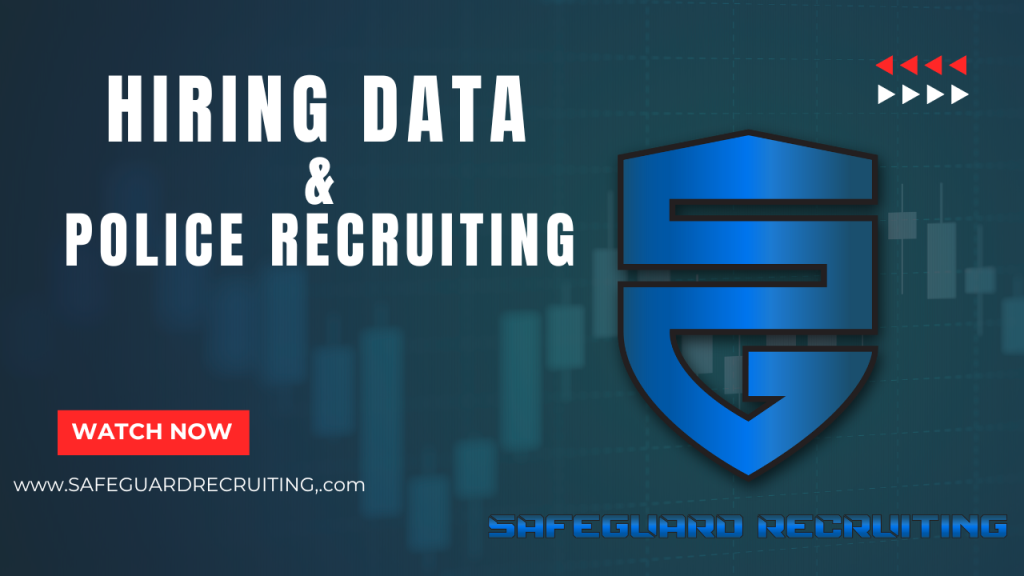Recruiting for police departments is a complex task that requires a deep understanding of data. Today, we dive into the critical information needed to ensure successful recruiting campaigns. Doug Larsen, the CEO of SAFEGUARD Recruiting, shares insights on how to effectively gather and utilize this data for better results.
Understanding the Recruiting Process
Before launching any recruiting campaign, it is essential to gather specific data that can help streamline the process. Doug emphasizes that it’s not just about launching a campaign but understanding the entire journey from interest to hire.
One of the first steps is to identify how many individuals a department needs to engage with to generate applications. This involves asking questions such as:
- How many people need to be contacted to get someone interested?
- What is the conversion rate from interest to application?
- How many applications lead to actual hires?
The Importance of Conversion Rates
Understanding the conversion rates at each stage of the recruiting process is vital. For instance, knowing how many job seekers need to be contacted to receive a certain number of applications can help departments plan their outreach efforts effectively.
Doug explains that many departments focus primarily on how many openings they have but fail to consider how many people they need to contact to fill those positions. This lack of understanding can lead to challenges in effectively staffing the department.
Data-Driven Campaigns
At SAFEGUARD Recruiting, the approach to pricing campaigns is unique. Instead of charging based on impressions or branding, the focus is on the actual cost per hire. This data-driven model allows for more precise budgeting and planning.
When departments provide data on their conversion rates, it enables Doug and his team to tailor campaigns specifically to their needs.
Real-World Examples
During one seminar, Doug provided a compelling example of how a department went from 12,000 interested individuals down to 100 hires. The journey included:
- Starting with 12,000 interested individuals.
- Achieving a 25-30% conversion rate to applications.
- Further filtering through interviews and background checks.
This example illustrates the importance of understanding the entire recruitment funnel and how critical data points can help streamline the process.
Challenges in Traditional Recruiting Methods
Many departments still rely on traditional recruiting methods like job fairs and billboards. However, Doug points out that these methods may not yield the same results as digital campaigns.
For instance, a billboard may attract attention, but it does not provide a way for individuals to express their interest. In contrast, digital campaigns can generate leads and provide measurable results, allowing departments to see how many people are genuinely interested in applying.
The Role of Digital Campaigns
Digital recruiting campaigns can operate 24/7, targeting specific audiences and generating interest more effectively than traditional methods. Doug notes that clients often receive between 1,500 to 2,000 interested individuals per month through these campaigns.
This data not only helps in filling positions but also provides justification for the budget spent on recruiting efforts. Departments can return to their city councils or mayors with solid data showing the return on investment for their recruiting campaigns.
Key Takeaways for Successful Recruiting
To ensure a successful recruiting campaign, departments must prioritize understanding their data. Here are some key takeaways:
- Identify the number of individuals needed to generate applications.
- Understand the conversion rates at each stage of the recruiting process.
- Utilize digital campaigns for more effective outreach and tracking.
- Justify your recruiting budget with concrete data on returns.
Final Thoughts
While data may seem dry or uninteresting, it is the backbone of successful recruiting. Without a clear understanding of the numbers, departments may struggle to fill their openings effectively. Doug Larsen’s insights shed light on the importance of data in the recruiting process and how it can lead to better outcomes for police departments.
For those looking to improve their recruiting strategies, investing time in understanding and applying data is crucial for success. Reach out to SAFEGUARD Recruiting and the team will provide a free consultation on how to improve your recruiting efforts.



